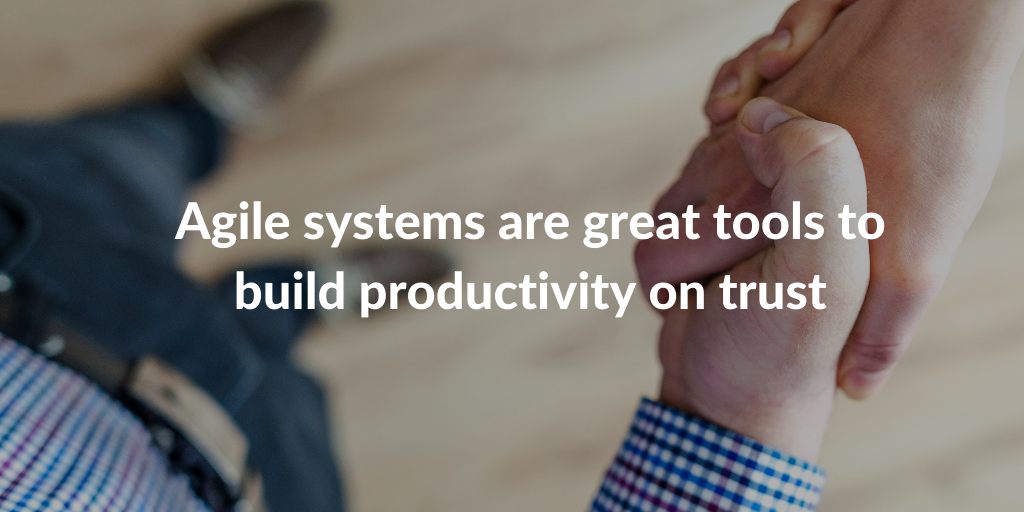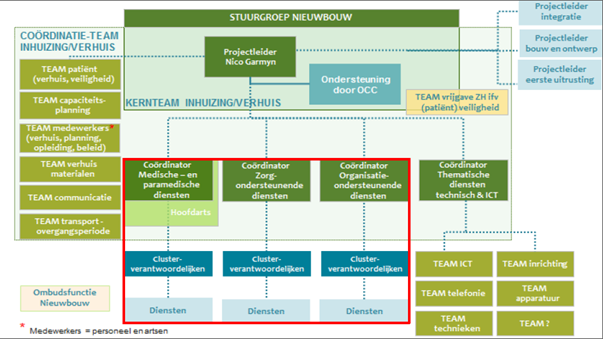News
View the latest inspiring and positive news and information about what's going on in the PM and IT world.

Date: 16/12/2020
The blueprint is a fundamental element of a program.
The subject of the blueprint is one of the key elements of program management and in particular of Axelos MSP (Managing Successful Programs) best practice.
A blueprint captures the skills an organisation wants to own at the end of the programme.
It helps decide which systems and what technology the organisation requires to succeed.
It helps elaborate on the needed skills and abilities and what kind of culture the organisation wants to create.
While vision within a programme is key to keep work relevant and aligned, it is also true that an organisation needs a more detailed model that describes what the desired future state is and how this will work.
This is the objective of the blueprint.
In practice, the blueprint provides the “behind the scenes” details of the vision.
It does so by describing how to get from A (where we are now) to B (where we want to be).
An organisation cannot move from an existing operating model to a future one overnight.
Especially considering the level of change and investment required. Instead, the changes must be gradual and develop over a period of 3 to 5 years. All these factors make that the blueprint is based on two pillars:
 Sources: *Axelos, Managing Successful Programmes: setting the blueprint for a better future
**Axelos, A blueprint for change
Axelos, The blueprint – a cornerstone of programmes and MSP
Sources: *Axelos, Managing Successful Programmes: setting the blueprint for a better future
**Axelos, A blueprint for change
Axelos, The blueprint – a cornerstone of programmes and MSP
Read more
- What do we need? What are the skills we need in the future organisation?
- What will the change process be like? What is the time investment?
An example of a blueprint
An organisation wants to expand its range of services over a period of 5 years: the blueprint serves to clarify which services to improve, which services to continue to offer unchanged and which to start and stop. Once the organisation clearly knows the desired service offer, it can understand what is needed to provide these services. The blueprint helps to capture the capacity gap between the current state and the future state. By definition, the blueprint exists"to keep the focus on delivering the required transformation and business change". *
How to create a programme blueprint
Organisations often do not invest enough in preparing a programme and underestimate the time and detail needed to outline the vision and design the blueprint. Sometimes it happens that the "delivery mode" is activated without having a coherent view of the total capacity required. If you are not careful enough, this can turn into a misaligned and inefficient business model. The work that goes into blueprinting is critical to establish the foundations of a coherent future business model that considers processes, the organisation, technology and information as a compelling and comprehensive solution. One of the most important aspects of the blueprint is that it must be aligned with the future vision. Some organisations are skeptical of making it visible, but according to Martin Stretton"all resources need to feel involved in the change process, not just senior management". **In order to increase participation the question to ask is 'how can we bring the team with us on this path'? When defining roles and competencies, you may need roles other than existing ones. At this point, external people can be hired or the own team can be taught new capacities and skills. The blueprint provides the framework to inform resources about these decisions and move forward. The blueprint gives substance to the vision and includes details of the current state of the programme (where we are now) and how the future operating model will work (where you want to be). It elaborates on the differences between the two - in order to provide insight and so you can cover them with projects and other programme activities. The blueprint may contain details of the future organisational structure, processes, functions and performance levels and what technologies and information can be used to support them. In practice, the blueprint shows the skills/ competences the programme aims to achieve.
4 tips to write a Blueprint
Some things to keep in mind when designing a blueprint are:Involve the right resources
Involve resources who know the business and who can help define the future state of the organisation. For example business change managers.Start an iterative process
You will be able to develop the first draft of the blueprint based on the initial vision and the benefits you want to achieve. However, this initial vision will change once you will review the benefits and see more clearly the costs and timing required to achieve them. The blueprint could therefore change. As you develop your blueprint, you may realize that the work required is too expensive, takes too much time, or does not lead to the benefits your organisation needs. So you may have to go back and rethink the blueprints needed to achieve the desired future state, or go back and review the blueprint content.Review the overall business case
In the iterative process of creating the blueprint, at some point the programme should demonstrate an acceptable balance of cost, benefit, time and risk. Once the equilibrium is reached, you can check the business case to validate its feasibility and convenience. After that you can formally approve the business case.Use the blueprint throughout the programme
During the programme, make sure you are in the right direction. The blueprint provides the basis for developing project requirements and should be used to check that project outputs will help develop the required business capabilities.Finalized blueprint
When you have completed your blueprint and achieved the expected final results, you can close the programme. As part of the closure you can review what was delivered and make sure you have the correct KPIs to continue tracking benefits realization after the programme closes. MSP Best Practice highlights the importance of the blueprint and how to use it, along with other elements such as the business case and programme plan, to design and implement a successful programme. Sources: *Axelos, Managing Successful Programmes: setting the blueprint for a better future
**Axelos, A blueprint for change
Axelos, The blueprint – a cornerstone of programmes and MSP
Sources: *Axelos, Managing Successful Programmes: setting the blueprint for a better future
**Axelos, A blueprint for change
Axelos, The blueprint – a cornerstone of programmes and MSP
Date: 09/12/2020
Eralp is working as a Scrum Master at Realdolmen-Inetum and cooperates with other Scrum Masters to work wonders with our teams.
Scrum Master
Eralp is working as a Scrum Master at Realdolmen-Inetum and cooperates with other Scrum Masters to work wonders with our teams.
Read more
What is your current job title? What is it you actually do?
I am a Scrum Master supporting a number of teams to improve their working processes and optimize their inter-team interactions.How did you arrive to follow a project management career?
Quite by chance, actually. During the first years of my career, I had the opportunity to be part of a significant restructuring effort of a bank. It showed me the importance of clear organizational structures with fluid communication channels and a strong emphasis on transparent responsibility definitions. Many years after I left the bank and while walking on an entirely different career path, a friend of mine asked me to join him in his startup for online project management training. Considering my earlier experience and readiness to make another career change, I joined him. This was about 9 years ago.You have an AgilePM Certificate, how did that help you reach your goals?
In the beginning, its value was very apparent in theory but highly obscure in its practical application. The reason for that was mainly because there were no documented examples out there to give an idea of how best to start implementing the AgilePM processes and structures. At the time that I got certified for AgilePM, I was already an accredited PRINCE2 trainer and I already had my PSM I certification. So I could say I knew my way around two potentially complementary frameworks and AgilePM was sort of the missing link between them. For many years, I didn’t have the opportunity to apply to AgilePM. But about two years ago, this changed and I started working in a development project as a Scrum Master / Scrum Coach for a corporate client with multiple Scrum teams. In this project, the application of Agility was paramount and the idea of teams working as Scrum Teams received complete agreement from both sides. On the team level, it was working but as Scrum does not provide a framework on the project governance side their engagement had to be coordinated. Especially because this particular project enjoyed multiple technical and business stakeholders. Fortunately, the company I was working for at the time, used AgilePM as one of its primary Agile frameworks and we applied the organizational structure of AgilePM to our project. This helped significantly to ensure alignment among the stakeholders and helped build a common vision. To summarize, we used the AgilePM organizational structure to improve the stakeholder engagement and applied the Nexus framework to organize multiple Scrum Teams.AgilePM is considered to be IT-oriented however we know it’s possible it can be applied for any kind of project. Could you share an experience with AgilePM outside IT?
My experience using AgilePM is limited to IT projects. However, all Agile frameworks and concepts are applicable for any kind of project. In another project, our team used the Scrum framework to transform a marketing team into a kanban-using team. On a personal level, I used Agile concepts to manage the renovation of my house. Do you think AgilePM is easy to apply for a PM Team? What would it take to do so? Actually, the structure of the AgilePM framework is very simple and straightforward. However, the mindset behind this structure is different from the traditional management mindset. For that reason, an AgilePM coach is a must, as the framework also points out.Did Agility offer guidance during the changes in 2020? If so, how?
Changes in 2020 forced organizations to become more Agile. Remote working removed the individuals from environments that are potentially designed for control. Now that everyone works out of those environments, both the individuals and organizations are learning to trust each other. Agile systems are great tools to build productivity on trust.I know that you also have a wide knowledge of using other Project Management methodologies like PRINCE2. How would you compare PRINCE2 with AgilePM?
AgilePM is an Agile version of PRINCE2. In fact, in an article, I read it was mentioned that the AgilePM was originally designed to be compatible with PRINCE2 so that the transition from one to the other could be easy. I think it is also one of the earliest Agile methods. AgilePM comes as scalable. Additional methods are not required to make it applicable to single team projects or for multiple team projects. It is very flexible and that makes it very powerful.How do you choose the right methodology for your project, are there projects that benefit more from PRINCE2 or AgilePM?
Now that I have at least one experience using AgilePM, I would aim to build a project based on its structure. However, methods such as PRINCE2 or AgilePM aim to optimize the information flows and decision-making mechanisms within the project. In the end, once these concepts are internalized, you tend to use whatever aspects of these methods are useful to solve your existing problems without thinking too much about which aspect belongs to which method. You end up building a custom method for the specific project you are working in and these methods change with each new project.How do you see your future in Project Management and what are the things you like to learn to keep on developing yourself as a professional?
There are many aspects of project management and project delivery. On the management side, I am planning to improve myself further on portfolio management and Agile leadership. On the delivery side, learning more about DevOps would be a great benefit. Eralp Tezcan
Eralp Tezcan
Scrum Master
Eralp is working as a Scrum Master at Realdolmen-Inetum and cooperates with other Scrum Masters to work wonders with our teams.
Date: 02/12/2020
The AgilePM Foundation Qualification is a professional qualification in the field of Agile Project Management. This qualification provides you with advice, supported by Hints and Tips based on the DSDM approach, on how to manage a project in an Agile way.
There are no mandatory prerequisites.
Work experience in project management is recommended.
Read more
Examination Target
- Practicing project managers
- Agile team members who wish to become Agile Project Managers.
Exam Format
- Language: English (please add the relevant languages for your markets)
- Duration: 40 minutes
- 25% extra time if you take the exam in a language that is not your native language
- Materials: No materials
- No books or notes are permitted
- Questions: 50
- All 50 questions are Objective Test Questions (OTQs)
- Pass Mark: 25 marks or above
- Exam Format: Online or Paper
- Certificate Format: Online
- THE online certificate is usually included in the exam fee, you can ask for a paper certificate to the Exam institute after your exam
The AgilePM Foundation Exam Questions examples
The questions are all ‘multiple-choice’. Standard, Negative, Missing word, List, EvaluateExample ‘standard’ OTQ:
What DSDM role ensures that the Solution Development Team functions as a whole and meets its objectives? a) Business Analyst b) Project Manager c) Team Leader d) Solution TesterExample ‘negative’ standard OTQ:
Which characteristic does NOT relate to the Solution Development Team? a) Each role empowered to make decisions b) Flexibility to swap team members in and out of the team c) Desire and authority to make day-to-day decisions d) Business knowledge and technical expertiseExample ‘missing word’ OTQ
Identify the missing words in the following sentence. An organization amenable to incremental delivery of solutions [?] will benefit from early return on investment. a) at the lowest possible cost b) into live use c) for testing in the deployment d) with minimum effortExample ‘list’ OTQ:
Which of the following elements make up common sense? 1. Sound judgment 2. Practical judgment 3. Normal native intelligence 4. Specialized knowledge a) 1,2,3 b) 2,3,4 c) 1,2,4 d) 1,3,4Example ‘evaluate’ OTQ
Which of the following statements about the Solution Architecture Definition is true? 1. The Solution Architecture Definition contains the strategy for testing and review of the solution. 2. The Solution Architecture Definition contains both business and technical aspects of the solution. a) Only 1 is true b) Only 2 is true c) Both 1 and 2 are true d) Neither 1 or 2 is trueThe AgilePM Foundation Objectives
The AgilePM Foundation level qualification aims to measure whether the candidate has sufficient knowledge and understanding of the Agile Project Management Foundation guidance to be able to recognize and distinguish between the key elements of the approach. The Agile PM Foundation qualification is also a pre-requisite for the Practitioner qualification. As a candidate you need to demonstrate the achievement of these learning outcomes:- Understand the underpinning philosophy and principles of Agile.
- Understand the lifecycle of an Agile project, including alternative configurations.
- Understand the products produced during an Agile project and its purpose.
- Understand the techniques used and their benefits and limitations.
- Understand the roles and responsibilities of an Agile project.
The AgilePM Foundation Certificate
The validity of the AgilePM Foundation certificate is a lifetime. This certificate will never expire. QRP International is an AgilePM Accredited Training Organisation (ATO) by APMG International and is authorized to deliver AgilePM Foundation courses and can prepare you for the examination leading to the AgilePM Foundation Certificate in Project Management.
Date: 25/11/2020
When it comes to DevOps, you will often hear people saying that certifications do not have any value.
“DevOps cannot be codified”,
“it is more a philosophy than a framework”
and other similar explanations.
Jane Groll, the founder of the DevOps Institute, said:

Read more
“We test young children on their ability to spell, we test drivers on their ability to operate a vehicle, and we test university students until they prove they are worthy of a degree. Auto mechanics, hospital technicians, and insurance salespeople all get certified. Why is an IT certification any different?”Holding a certification doesn’t mean that you have a real-life experience. Certification is proof that you demonstrated enough knowledge to be trusted with doing something. In order to obtain a certification, you have to study the core principles of a method, framework, or philosophy. And this demonstrates dedication and motivation to your professional development. Especially in the IT sector, which is always evolving, having a certification is becoming more and more important. Recruiters cannot know all the frameworks or development methodologies they have to deal with. So they often rely on third parties - and certifications - to understand whether candidates are qualified or not. IT professionals who have been in the industry for a long time can also benefit from certifications, because they can guarantee modern and up-to-date knowledge, without any gaps between their skills and the ones requested by the ever-changing IT sector.
DevOps Certifications
Continuous learning is one of the core principles of the DevOps philosophy. In a DevOps environment, the principles and practices around DevOps must be taught and kept up to date. DevOps is a competence so if there is no resistance to training, why is there such a resistance to testing and certification? DevOps certifications include general knowledge, tool-specific, and related processes and emerging practices. The goal of the certification is to educate not to certify, to learn, and not to pass the test. As Jane Groll declared:“if the entire IT community became certified in DevOps practices and processes, we would have trained a capable workforce that has a shared mindset, can be cross-functional, understands the “rules of the road” and can continue their learning journey through practice and experience.”At a time such as this, when there is a recognized talent gap, upskilling programs are fundamentals and should be encouraged by organizations. Professionals need to continuously enhance their knowledge and their careers. Of course, experience counts, but the experience is limited to the environment from which it was gained. Certification is the way of proving professionals who have studied their craft enough to pass an exam.
Other important certifications for IT professionals
IT is one of the most dynamic sectors ever and keeping up with all updates, new skills, and emerging practices could really become a full-time job. What are the other important certifications for IT professionals?ITIL
With the launch of ITIL4, the most widely accepted approach to IT management experienced an important update. ITIL 4 addresses the new processes and methods used in modern IT, such as DevOps, Agile, and Lean IT development. ITIL focuses on the intersection of IT and the needs of the business and it’s one of the 15 top-paying IT certifications. Find out more about ITIL.
Google Certified Professional Cloud Architect
This certification is associated with the highest salaries in IT in the US. The certification demonstrates the ability to design, develop, and manage secure, scalable, and reliable cloud architecture. It’s an important IT certification given that cloud skills are critical for any organization operating in the cloud.PMP
PMP is a project management certification, probably the most important industry-recognized certification for project managers. It could make the difference when deciding on who to entrust with important organizational project initiatives. PMP is the 5th top-paying certifications in IT according to the “2020 IT Skills and Salary Survey” by Global Knowledge. Read here to find out what PMP is all about. Finally, it’s not just the IT employees who can benefit from this kind of certification. Developers and consultants can use certifications to establish trust between themselves and their clients. Do you want to know which certification is the best fit for your needs? Contact us! Sources: DevOps Institute, IT Certifications Are Important — Particularly for DevOps, by Jayne Groll © 2020 DevOps Institute. All Rights Reserved.
Date: 18/11/2020
Stand-up meetings are the heart of an Agile project.
During a stand-up meeting, the most important information is shared and roadblocks are removed.
This makes the stand-up meeting essential for the success of the project.
What happens during these meetings?
Each team member shares what they did yesterday, what they intend to do/achieve today and discuss potential obstacles that could help them get on with their work.
Read more
What is a stand-up meeting
A stand-up meeting is a team meeting held in a standing position at the start of each working day. All technical and business specialist team members should attend along with the project manager, sometimes called the Scrum Master. The stand-up meeting gives you the basics to stay in control of the project: tracking progress based on the features planned for each sprint is your control mechanism. The stand-up meeting is made to align the team and to share the progress made. Completed features are reported in stand-up meetings, as well as on the feature board, in the team room.Five important rules for stand-up meetings
- Duration,
- Focus,
- The team leads,
- Listen attentively,
- Use the information.
1. Duration
The duration should be about 15 minutes, max 30: the stand-up meeting must be short and to the point. Participants remain standing so that the meeting is fast, optimistic, and active.2. Focus
The stand-up meeting is not to resolve problems. If there are any problems they should be reported and discussed after the stand-up meeting, and reported to the group the following day. Not to solve problems, might be the most difficult habit to break. The idea however is that if you manage the problems after the meeting, you make sure that only the necessary team members are part of the discussion.3. The team leads
The project manager takes the role of an observer, leaving space for the team to lead. As a project manager, you should look at the problems that have not been solved and remove the roadblocks for the team. Additionally, you should ensure that the risks are diminishing and after the stand-ups, you should communicate the status to key stakeholders, so that they are informed of the progress of the project.4. Listen attentively
The project manager’s job during the explore phase is to protect and increase the productivity of each team member by leaving them to manage the distractions that can slow down their work. If features are lagging behind, find out why to try to make changes as fast as possible and take note so that lessons learned can be applied. Here are some things to observe during daily meetings:- is the team collaborating or is there tension in the air?
- Are there any risks that may impact future sprints?
- Is there a common problem that you can help solve (after the meeting of course)?
5. Use the information
Make sure that issues mentioned in the stand-up meeting are resolved in a timely manner: your issue log will give you the mechanism to determine if issues are growing in volume. As in non-Agile projects, keeping a record of issues is necessary. This can be an indication that something is going wrong and that you should consider changes.How to improve your stand-up meeting
- Change the presentation order every day,
- Assign a person on the team the role of "timekeeper",
- Hold the meeting at the same time every day,
- Make sure that the meeting always ends on a positive note,
- Include your colleagues working from remote.
1. Change the presentation order every day
Always changing the order adds energy to meetings;
2. Assign a person on the team the role of "timekeeper"
In this way to have the group well concentrated. 30 to 60 seconds per person is enough. For each sprint, the timekeeper must change.3. Hold the meeting at the same time every day
4. Make sure that the meeting always ends on a positive note
Let the team share the victories achieved after the last meeting. For example:- did the business really like what it saw in the last product review?
- Was a resource on the technical team able to overcome an issue the team is particularly proud of?
5. Include your colleagues working from remote
Do not see remote working as a hindrance but change the format of the stand-up meeting by using an online meeting tool! Stand-up meetings of just 15 minutes can be important and useful - now all that remains is to commit to making your stand-up meetings focused, short, and flawless. Cause commitment is the real key factor to success!
Date: 11/11/2020
Maddy is a staff member of the Process and Project Management of the Quality and Strategy department of AZ Sint-Maarten, a hospital in Belgium. Over the years she gained lots of hands-on experience with Project Management and is currently responsible for the PMO.
 The structure was followed very strictly. All other projects were discontinued/postponed.
During that period we were guided by consultants, 1 of whom acted as 'PMO' as I was active within the projects themselves.
In 2019, after we moved in, we took a close look at the entire operation of the PMO and we have been working on the new operative PMO since 2020.
The structure was followed very strictly. All other projects were discontinued/postponed.
During that period we were guided by consultants, 1 of whom acted as 'PMO' as I was active within the projects themselves.
In 2019, after we moved in, we took a close look at the entire operation of the PMO and we have been working on the new operative PMO since 2020.

Read more
What's your current job title? What is it you actually do?
I am a staff member of Process and Project management. My position is part of the Quality and Strategy department within AZ Sint-Maarten (hospital) in Mechelen. Within my position, I have different roles and responsibilities, of which:- Responsible for PMO, which includes the following:
-
- Follow up all current projects in preparation of the Project Management Committee (the decision-making body).
- Capture all project ideas and convert (translate) them into a concrete project definition in preparation for PMC (depending on the go / no go decision of the project).
- Prepare the agenda for PMO + PMC.
- Project coaching this can differ from refining a project definition to coaching during the entire project planning/execution.
- Providing all documentation regarding project work within the hospital.
- Provide training on project management, both group and one-on-one training.
- Project manager for larger cross-departmental projects (often hospital-wide projects).
- I filled in this role during the run-up of the relocation to the new hospital, currently, I am involved in less cross-departmental projects.
- Project leader of the project and development of our new mission and vision (starting from 2021).
- Lean coach / lean expert, we recently started implementing a lean philosophy which includes continuous improvement. My role is to guide the entire process of cultural change, partly by supplying methodologies and coaching.
- Supervisor process optimization, using the lean methodology.
- Strategic preparations of all kinds aimed at the whole range of "quality".
How did you arrive at your current position?
I started at AZ Sint Maarten as main responsible / coordinator of reception services and patient administration. Within this role, I started an optimization process and this led to my new role within the Quality and Strategy department in 2011. While working at the Quality and Strategy department, the organisation decided to put a separate organ in place solely focused on project management. AZ Sint Maarten started this service in 2012 and I got the position as 'project employee'. At this point in time, we started our PMO and I have been actively involved with this. To further develop myself I started a Master in Management and Policy of Healthcare and partly due to this in 2016 I got promoted to my current position. From my current position, I have been appointed as Project Leader of various projects related to the relocation to the new hospital. I managed the ‘telephone’ project, which included the process, number plan, devices, different types of calls etc. But also worked in the project regarding waiting room management (including tools), communication screens, implementation of SmartAIM (application for identity and access control) & badges. Another crucial project I have been part of is the moving of patients to the new structure.You work in a hospital, you think the hospital sector approaches PM differently than other sectors? If so, how?
Yes, I am sure about it. Within the Hospital sector, it is very difficult to be able to appoint "dedicated project managers". Operationality and BAU (business as usual) are always given priority, as the main responsibility of the hospital is to provide care. Project management and change always come at a second place and it is difficult to fully assume the role as Project Manager. As a result, Project Leadership must often (usually) be taken up within the hours of another position and has become a very sensitive topic in terms of financing.What are the types of challenges that you face in Project Management and how do you overcome these challenges?
The biggest challenge is to keep everyone aware of the structures that we set in place, the fixed agreements that must be followed before a project can and has the approval to start. This calls for persistence and a certain "stubbornness". I realized that I have to push others to see the importance of the structure. This is a delicate process and I noticed that sometimes it is wise to let the topic rest for some time. Only to push again after! The organisation needs a certain structure, but this cannot be enforced. You have to systematically make this visible and show that the structure does contribute to efficiency and success. On the other hand, there is the challenge of the constant trade-off that has to be made between theory and practice within Project Management. Within Project Management, you must invest sufficient time in the "administrative" part, such as project definition, project progress, planning, documentation of decisions, etc. Often that documentation is considered "too much" / "too bureaucratic", but it has to be done nonetheless. We always approach this from a pragmatic approach and do not take it to the extreme, but we advocate minimal processing of the Project because this is the only way to ensure that Projects can be followed up, supported and lead to success.I know that the hospital you work for just merged with two other hospitals. How was that handled?
Between 2016 and 2018 we had a slightly different project approach than the "normal PMO" as we were in the middle of the relocation. This "temporary PMO" concerned a whole programme of projects with a clear structure. The structure was followed very strictly. All other projects were discontinued/postponed.
During that period we were guided by consultants, 1 of whom acted as 'PMO' as I was active within the projects themselves.
In 2019, after we moved in, we took a close look at the entire operation of the PMO and we have been working on the new operative PMO since 2020.
The structure was followed very strictly. All other projects were discontinued/postponed.
During that period we were guided by consultants, 1 of whom acted as 'PMO' as I was active within the projects themselves.
In 2019, after we moved in, we took a close look at the entire operation of the PMO and we have been working on the new operative PMO since 2020.
What are the benefits of the PMO and how can you measure these?
The PMO provides a clear overview of current affairs, steering towards our strategic objective (mission/vision). It helps us to do things right instead of doing the right things and offers structure to the organisation. In addition, there is the advantage that the PMO has on my position, as it leaves me with more time so that I can take on the role as a "coach" within projects. This improves the way of working in the organisation in a project-based manner and helps the organisation acquire more maturity. How do we measure the benefits? Current projects are closely monitored and if anything deviates from the original plans, this is put on PMC's agenda. As a result, we keep 'the pressure high' and people do not fall into normal operationality. This helps us that projects do not get ‘forgotten’. We have a tool that contains all projects so that status follow-up is (almost) continuously 'up to date'. From this tool, we can create reports and provide an overview of all people involved in the project.Did the global pandemic change the approach to PM in hospitals? How?
Yes, projects are running late and there are some that are no longer relevant due to new complications. In our case, this mainly means that there is a delay in the dissemination of knowledge about project-based working. For example, I was delayed in my guidance in drawing up project definitions. A delayed project definition automatically means a delayed start date of the project.What kind of advice would you give to the PM staff in hospitals to prepare for the future coming years?
Ensure a good internal project structure and provide clear role descriptions within this structure. Especially if there is a cultural shift needed towards a more active project management structure. IT projects and business projects in hospitals cannot be fully compared and neither can project management. Business is often a "change process" that needs to be tackled differently than simply installing an ICT application. It is also advisable to have someone in the "lead" in the follow-up of projects - a position similar to my position. This person is responsible to constantly push for the same goal. The entire operation of PMO takes time and is also a cultural change in the organisation. Do not underestimate this!What are three things you have told yourself that you would like to learn in the near future to develop yourself as a professional?
- I already know lots about the Lean methodology, but I want to master it more and more through an enormous amount of practice and practical examples.
- More knowledge and expertise regarding the budgeting of PMO and portfolio (TCO).
- Explore different coaching techniques, in order to offer the right coaching at the right time to reach the set goal.








